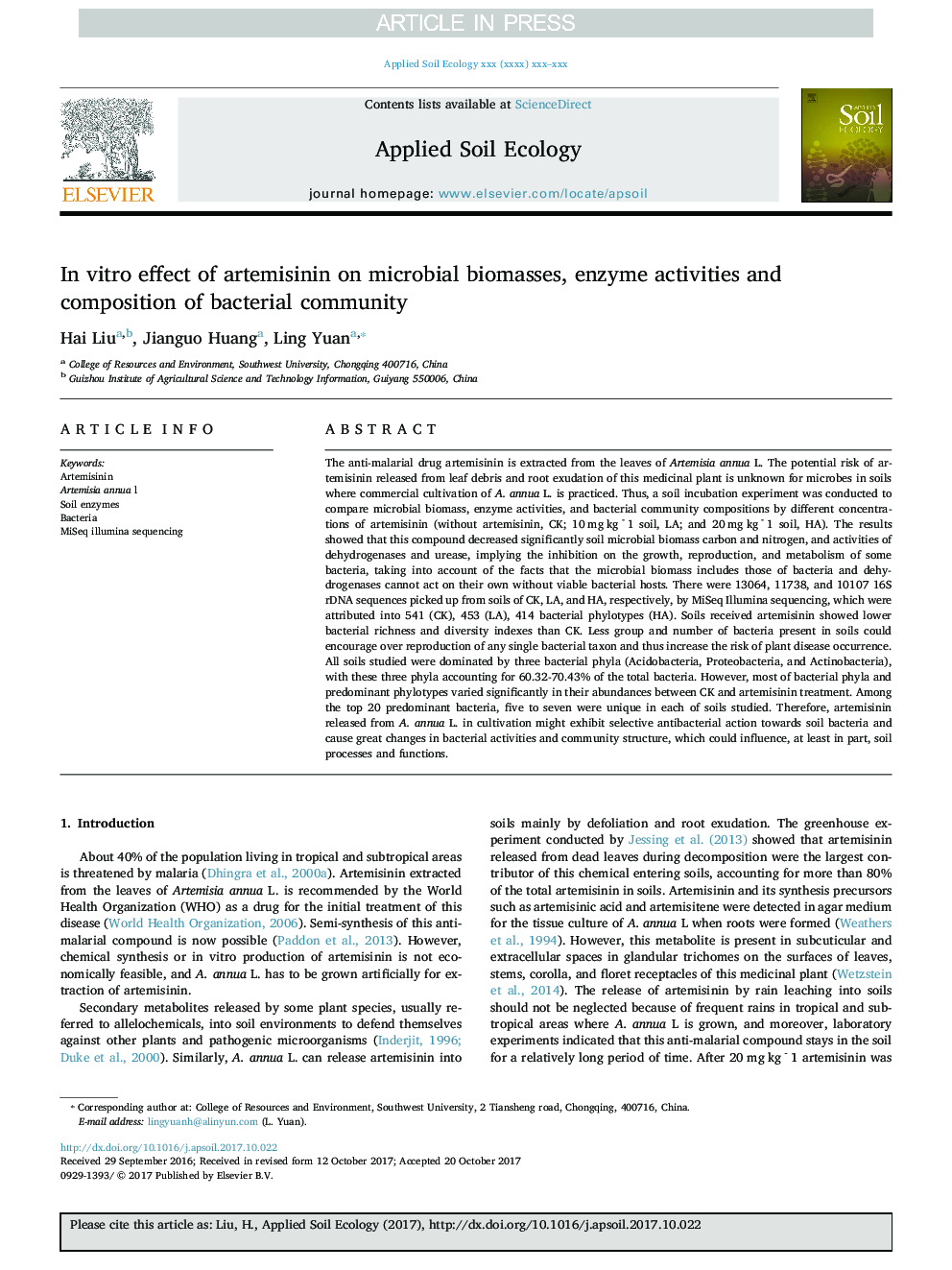| Article ID | Journal | Published Year | Pages | File Type |
|---|---|---|---|---|
| 8846748 | Applied Soil Ecology | 2018 | 6 Pages |
Abstract
The anti-malarial drug artemisinin is extracted from the leaves of Artemisia annua L. The potential risk of artemisinin released from leaf debris and root exudation of this medicinal plant is unknown for microbes in soils where commercial cultivation of A. annua L. is practiced. Thus, a soil incubation experiment was conducted to compare microbial biomass, enzyme activities, and bacterial community compositions by different concentrations of artemisinin (without artemisinin, CK; 10 mg kgï¼1 soil, LA; and 20 mg kgï¼1 soil, HA). The results showed that this compound decreased significantly soil microbial biomass carbon and nitrogen, and activities of dehydrogenases and urease, implying the inhibition on the growth, reproduction, and metabolism of some bacteria, taking into account of the facts that the microbial biomass includes those of bacteria and dehydrogenases cannot act on their own without viable bacterial hosts. There were 13064, 11738, and 10107 16S rDNA sequences picked up from soils of CK, LA, and HA, respectively, by MiSeq Illumina sequencing, which were attributed into 541 (CK), 453 (LA), 414 bacterial phylotypes (HA). Soils received artemisinin showed lower bacterial richness and diversity indexes than CK. Less group and number of bacteria present in soils could encourage over reproduction of any single bacterial taxon and thus increase the risk of plant disease occurrence. All soils studied were dominated by three bacterial phyla (Acidobacteria, Proteobacteria, and Actinobacteria), with these three phyla accounting for 60.32-70.43% of the total bacteria. However, most of bacterial phyla and predominant phylotypes varied significantly in their abundances between CK and artemisinin treatment. Among the top 20 predominant bacteria, five to seven were unique in each of soils studied. Therefore, artemisinin released from A. annua L. in cultivation might exhibit selective antibacterial action towards soil bacteria and cause great changes in bacterial activities and community structure, which could influence, at least in part, soil processes and functions.
Related Topics
Life Sciences
Agricultural and Biological Sciences
Ecology, Evolution, Behavior and Systematics
Authors
Hai Liu, Jianguo Huang, Ling Yuan,
